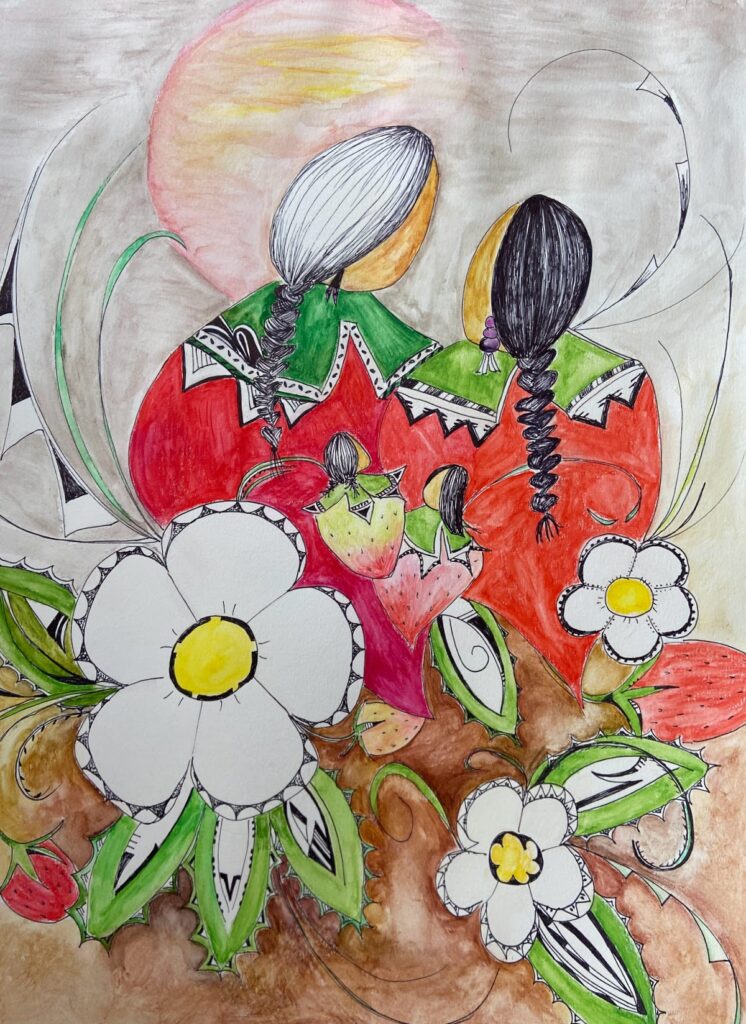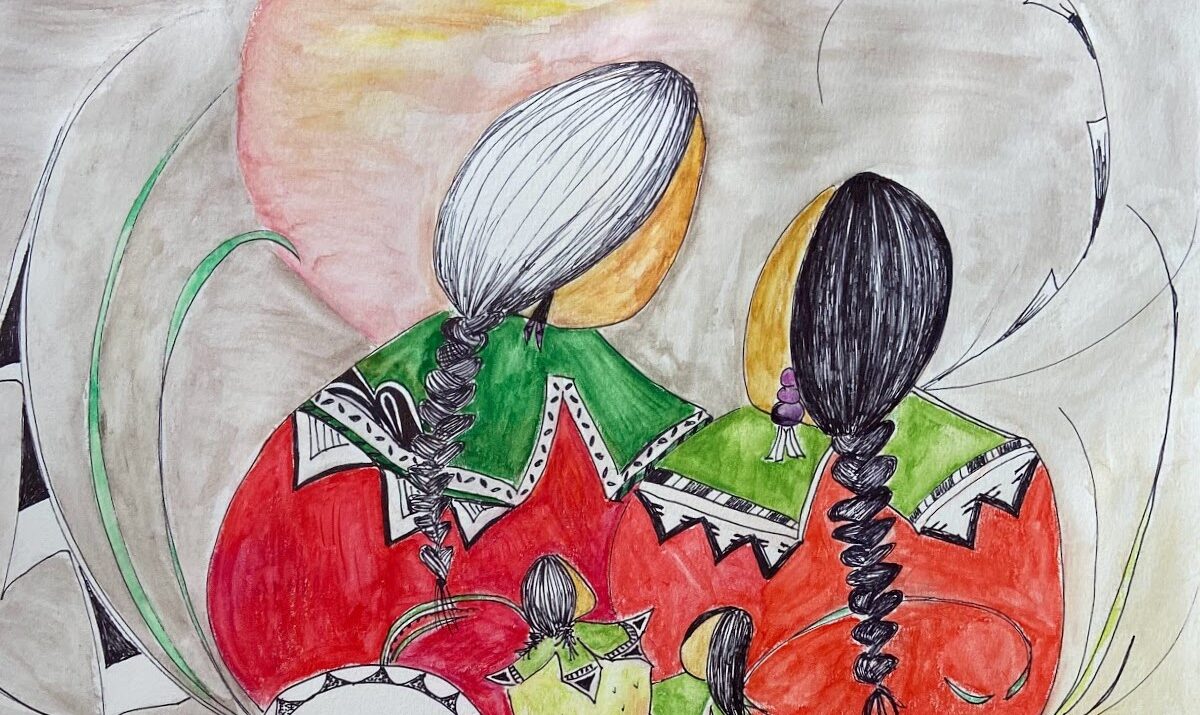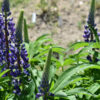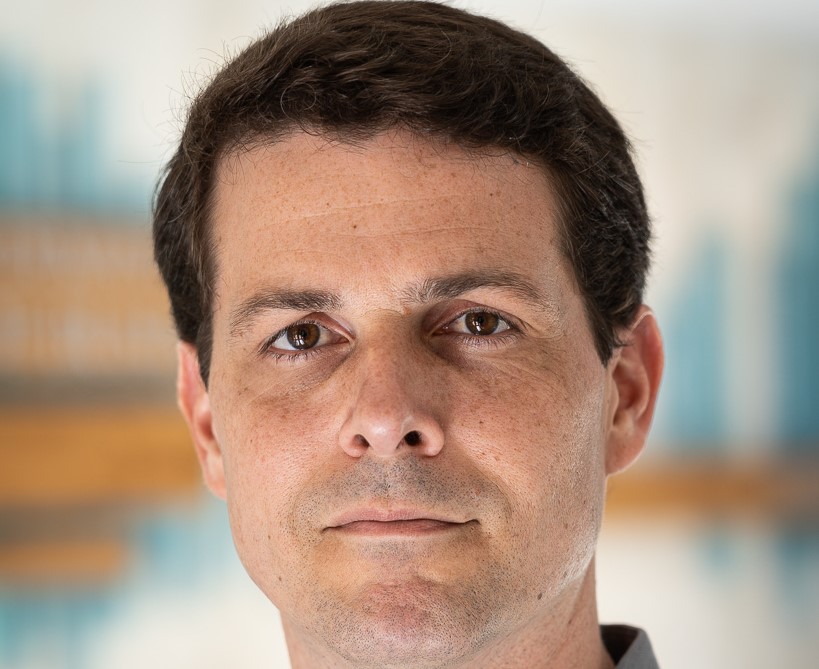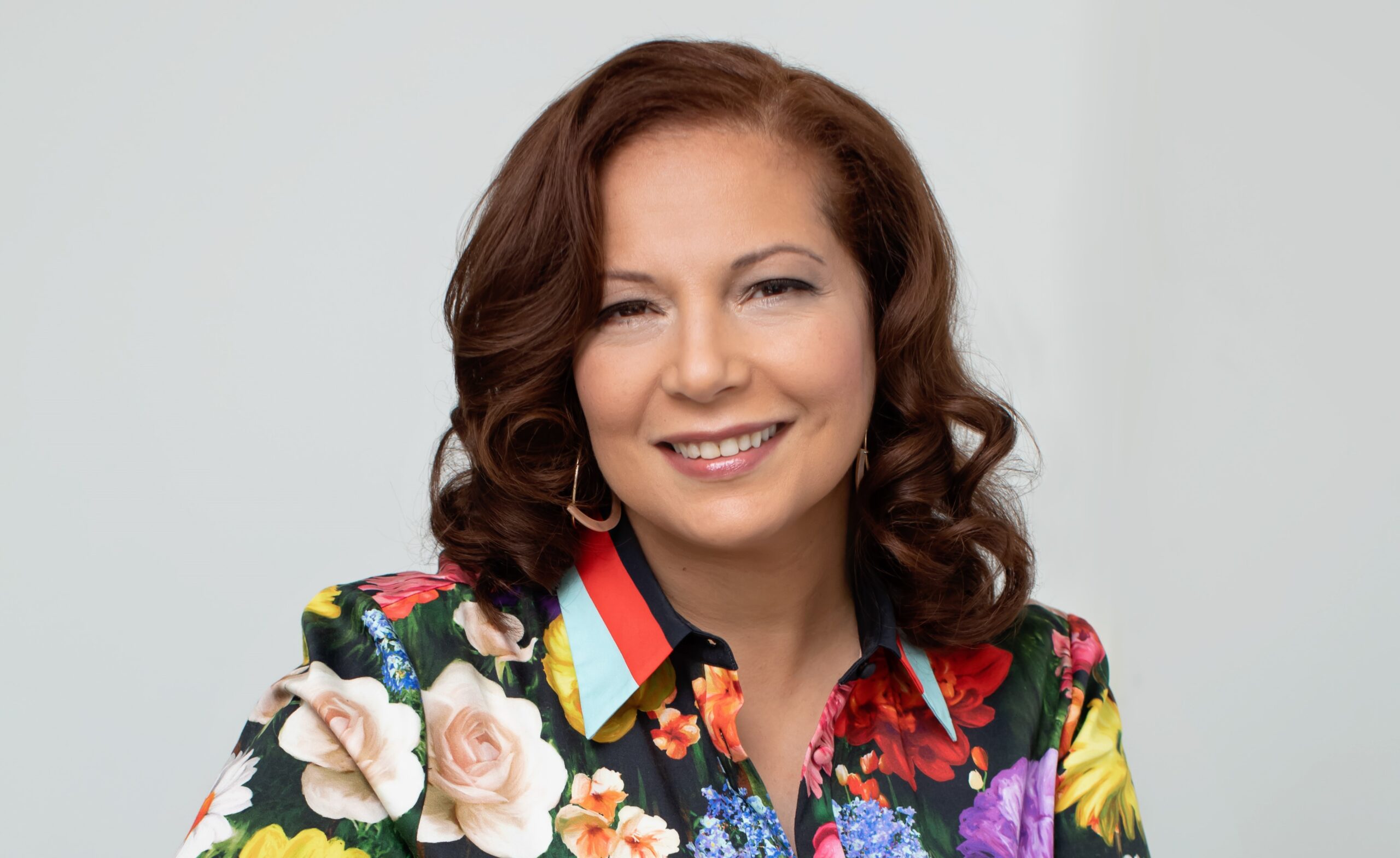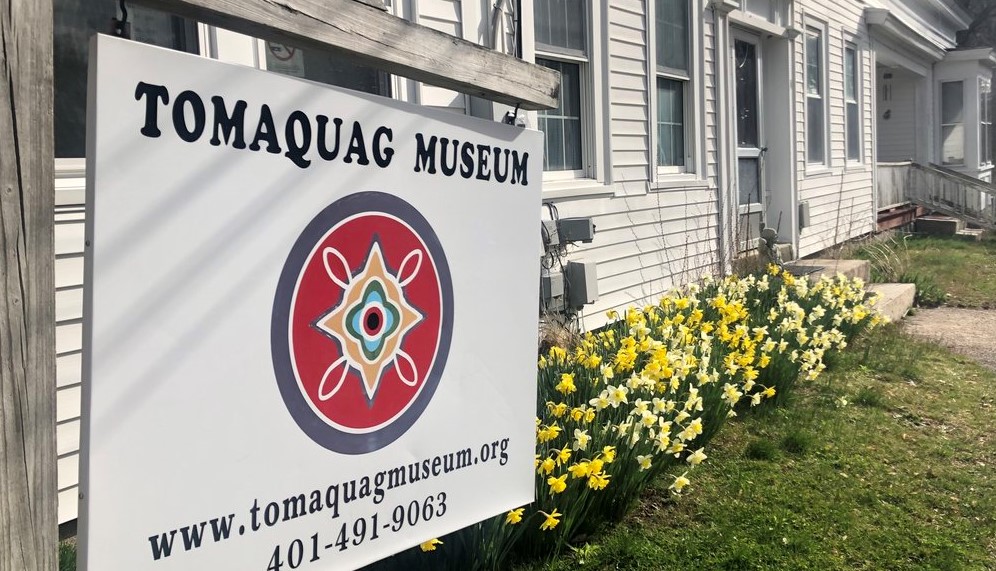‘If we don’t have native plants so that native pollinators can live, we will lose food sources’
So, you are thinking of sowing in your yard a few native plants. Who cares?
The list of who cares is long: pollinators like bees, hummingbirds, and butterflies; bats and birds; worms and underground bugs; fungi and bacteria; and plants.
And, who cares about the health of pollinators? Farmers, of course, and, in theory, anyone who eats. Native plants and native pollinators adapted over the millennia to live and work effectively together. The movements of pollinators allow plants to become fertilized and to produce fruits, seeds, and young plants. In turn, plants feed the pollinators.
“If we don’t have native plants so that native pollinators can live, we will lose food sources,” said Jane Case, owner of Blue Moon Farm, which grows and sells native plants and is located in South Kingstown. “Pollination is important in carrying on what sustains us.”
Native plants are generally understood as those whose ancestors had roots in this region before the arrival of Europeans. Plants, insects, and winged creatures that have lived and worked together here for millennia have formed an ecosystem of interdependence and they function well within it.
Non-native plant species introduced from other places can present a threat to native species, according to experts. They don’t support native pollinators as well as native plants do. They have no natural enemies here. They may compete fiercely, spreading fast and even threatening native species with extinction. If native species die off, the pollinators and insects that rely on them for food and resources also could die off, experts say.
“The entire food web is based on interactions between plants and organisms,” said Kate Venturini Hardesty, an educator at the URI Cooperative Extension. “Native plants feed a native insect population. This is an evolutionary relationship, and these relationships are not forged quickly. Some insects need certain plants. We lose species diversity when a species does not have the food it needs.”
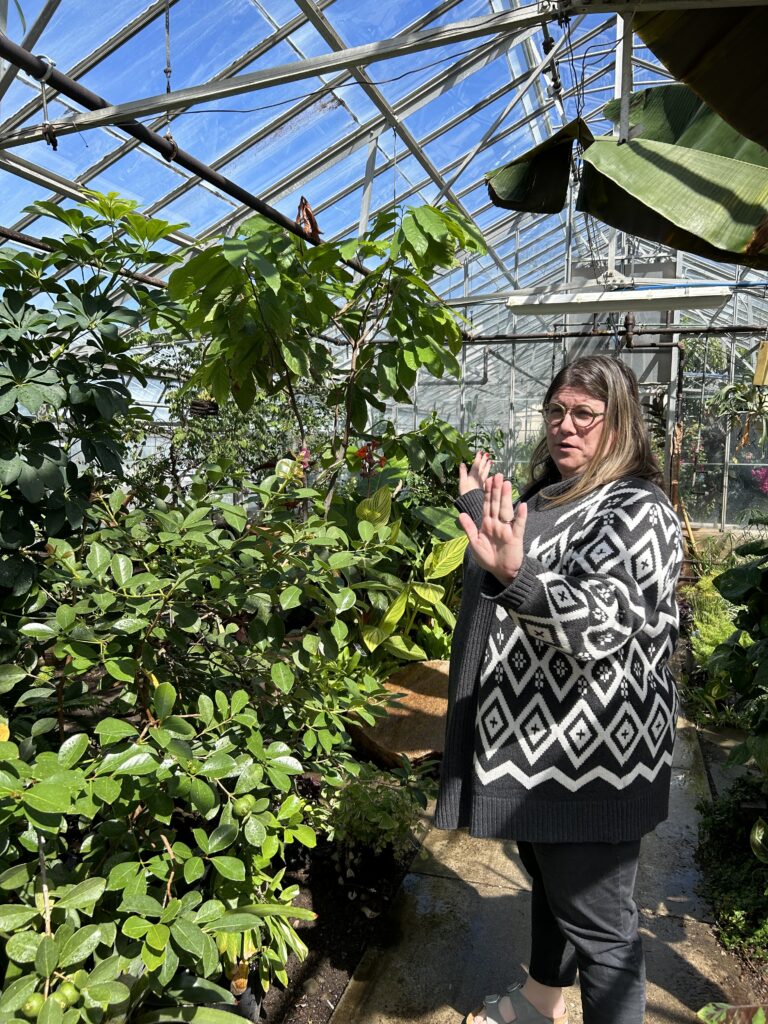
Plants that come from elsewhere and establish themselves on our landscape are called “introduced” or “exotic.” Plant species introduced from elsewhere that dominate our landscape, spreading voraciously and causing ecosystem destruction, are called “invasive.” For example, the pretty and aggressively invasive purple loosestrife from Eurasia is plowing through marshland in North America, eliminating nest sites and food for birds.
In contrast, native plants are those that evolved in our climate and are a natural element of our ecosystem. They support beneficial insects and the entire food web. Some native plants are considered “nuisance” species (poison ivy and bull briar, for example), but they have high habitat value for wildlife. Examples of native plants include wild bee balm, mountain mint, golden Alexander, foxglove beardtongue, butterfly milkweed, goldenrod, and New England aster.
What’s the Big Deal With native plants?
With global warming a growing concern, native plants may be more resilient to climate change than introduced exotics because they are so well established. “If there is a fluctuation a few degrees warmer or colder, natives are more tolerant because they sit squarely in the zone,” Hardesty said.
The view is seconded by David Vissoe, an expert with the Rhode Island Wild Plant Society. Native plants, according to Vissoe, “can tolerate a wide range of temperatures and seasonal abnormalities. Native plants have adapted to change over time and they support the biodiversity of an area,” including providing essential nutrition for beneficial insects. “It is a web of life and everything is interconnected,” Vissoe said.
Invasive plants, a subset of exotic, or introduced, plants, are aggressive, tenacious and competitive. They can produce a lot of flowers and seeds that appeal to birds that will eat them and then scatter the seed in their feces. Because they spread fast, invasive plants can create a plant monoculture, which may starve out native pollinators and introduce susceptibility to disease for themselves and the fewer insects they support.
One form of man-made monoculture is suburban yards with large turf lawns. Construction often begins with the cutting down of trees and digging up of the top six inches of soil, where a complex ecosystem of worms, insects, soil, grasses, and plants may have developed over time. Heavy layers of mulch can threaten a type of bee that nests underground.
The lack of biodiversity is dramatically on display also in the monocrops such as corn, wheat, and soybeans in vast fields in the Midwest. Some farmers have had to bring in European honeybees, Hardesty said, to pollinate crops because the evolutionary relationship between exotic food crops and native bees is not strong.
About one-third of Rhode Island is covered with plants that have been introduced from elsewhere, said Hardesty. How do exotic plants arrive? Early settlers wanted familiar plants from the Old Country. People like them for ornamental landscaping. Seeds of exotic plants hitchhike into the country in ballast water, sheep’s wool, animal feces, packing crates, and car tires. Kudzu, the voracious vine that blankets whole groves of trees in the American South, originally came from China and was brought to Rhode Island to control erosion near highways. “That was a big ‘oops’,” Hardesty said.
A short list of non-natives in the Rhode Island region would include purple loosestrife, multiflora rose, autumn olive, glossy buckthorn, Japanese honeysuckle, and Asiatic bittersweet.
Supporting the native plants
A desire to respect and restore native plants is on the rise among ordinary homeowners as well as farmers and academic scientists.
People at several Rhode Island garden centers say they get lots of inquiries from customers about using and buying native plants. Case, owner of Blue Moon Farm, said she has seen a big shift in interest in native plants over her career. “Forty years ago people had no interest whatsoever” in native plants, Case said. “I couldn’t sell anything with the word ‘weed’ in the name, like Joe Pye Weed,” a native plant that flowers into a gorgeous purple crown.
Matthew Crudale, nursery manager at Clark Farms in South Kingstown, noted a wrinkle in a town law that is giving native plants a boost. He said the town of Narragansett prohibits homeowners from allowing any water to drain off their properties. One solution to this is to create a “water garden,” or a low area in the yard, to which excess water can drain. Customers are showing up at Clark Farms, he said, with advice from landscape architects and lists of native plants that tolerate “wet feet” to sow in these depressions.
Restoring and promoting the use of native plants is a serious undertaking for URI master gardeners, the URI Cooperative Extension, and the Rhode Island Wild Plant Society, particularly through its ReSeeding Rhode Island project.
During the 2022 growing season, scientists from ReSeeding Rhode Island collected seeds from wild plants in Rhode Island. The seeds were sowed in the winter, and throughout the 2023 growing season they grew into healthy plugs. In fall 2023, plugs from 15 species were planted in “foundation plots” on the lands of partnering farmers and land trusts. The seeds from plants in these plots will be harvested each year, serving as the source with which to “re-seed” the state. A second cycle of the same process was initiated in 2023.
Albert Brandon, owner of Brandon Family Farm in South Kingstown and a partner in the Reseeding project, has planted hedgerows of native common yarrow, New York ironweed, gray goldenrod and mountain mint on his land to support the project.
The goals of ReSeeding RI, as stated on its website, are to create a wild-sourced seed bank in Rhode Island, to preserve the genetics of Rhode Island’s wild plants, to improve the biodiversity of the state’s native ecosystems, and to help connect people to the environment.
The Wisdom of Native People
People in South County who are seriously interested in plants are likely to be familiar with the farm and family of Dawn and Cassius Spears, in Hopkinton. Cassius Spears is a member of the Narragansett Tribe and his farm is named Ashawaug, Narragansett for “the land between two rivers.”
Spears, who grew up in Charlestown, waves off an attempt to call him a “farmer” because, he said, his role on the land – which he protects partly for future use by his eight grandchildren – is much broader than farming alone. The family does raise commercial crops such as corn in raised beds that help warm the soil and under high-tunnel greenhouses that can extend the growing season. Food is for sale at a farm stand on the property.
Spears said the family’s work also goes a long way in supporting native and heirloom plants, and plants of importance to its Native American heritage. He explores the woods and transplants wood lettuce and marsh mallow; he raises heritage Narragansett flint corn, crook neck squash, pumpkins, sunflowers, and Jerusalem artichokes. “We are seed savers and sharers,” he said.
Spears plants Three Sisters, a Native American tradition of three “companion” plants in which corn rises tall to support climbing bean plants while squash provides ground cover to retain moisture in the soil, fight off the weeds, and provide nitrogen for the corn.
Spears said a casual observer might see parts of his land that look unused, but that impression would be wrong. In those uncultivated-looking areas, pollinators are feeding, turtles are resting in sandboxes, mud wasps are burrowed in mud, and birds are nesting.
Spears said his family welcomes interested visitors so that people can “understand the value of working with the land, that we are not using things up; we are leaving something for the next generations.” He doesn’t like to promote the idea of Native People “in moccasins and breechclouts” because “we are still evolving.” One example: solar powered wells that provide water.
Dawn Spears is an essential part of the farm’s work. Her husband notes, with a tone of pride, that his wife is bent on “putting ‘culture’ back into agriculture.” One of her undertakings is to create paintings that celebrate the love of Indian people for the land.
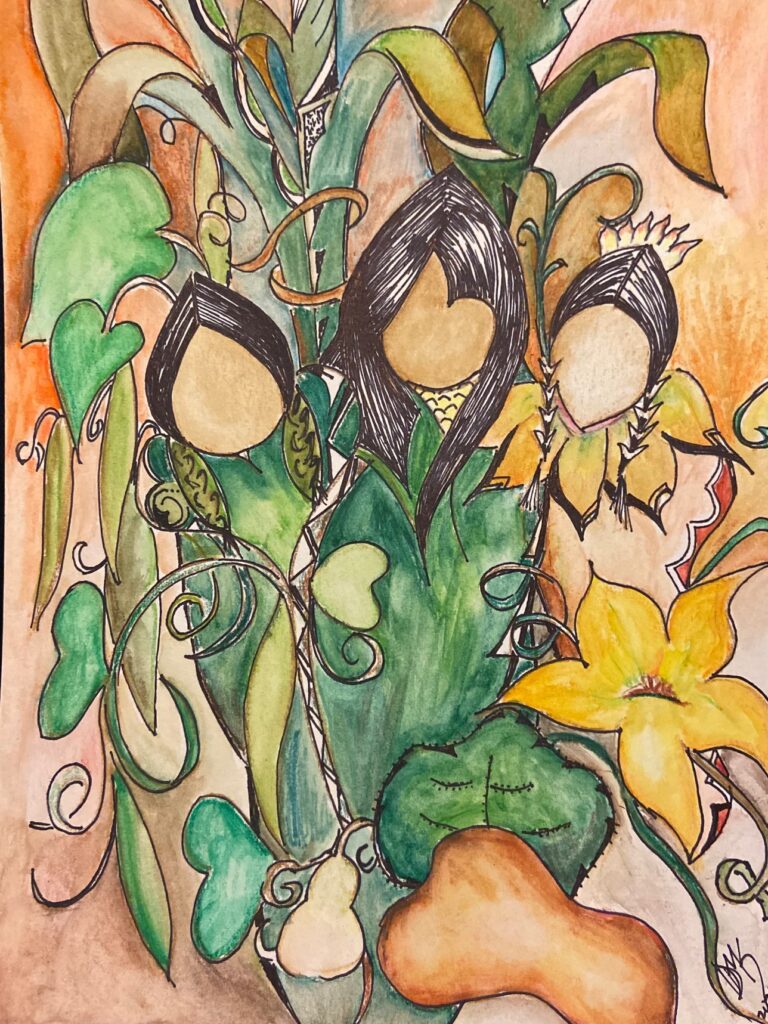
Spears said he likes to be on his land, notice a passing squirrel, and think, “Hey, your great-great-great- grandfather ran around here with my great-great-great- grandfather.”
Anyone in Rhode Island who wants to experiment with planting native species has a number of good resources. They include Rhode Island Wild Plant Society, the URI Cooperative Extension, and the RI Native Plant Guide.
Case, owner of Blue Moon Farm, loves the book with the upbeat title “Tiny and Wild: Build a Small-Scale Meadow Anywhere” by Graham Gardner. Case also recommends information provided by the Xerces Society. And, of course, any Rhode Island garden centers can offer plants and guidance.
Doug Tallamy is an entomologist at the University of Delaware and co-founder of the organization Homegrown National Park. In essence, that group is encouraging American homeowners – sitting on 135 million acres of residential landscape, including 44 million acres of turf lawn – to plant native species. Homegrown National Park calls itself “a grassroots call-to-action to regenerate biodiversity and ecosystem function by planting native plants.”
Homegrown National Park’s aim, according to Tallamy, is to “catalyze a collective effort of homeowners, property owners, land managers, farmers, and anyone with some soil to plant in…to start a new habitat by planting native plants and removing most invasive plants. It is the largest cooperative conservation project ever conceived or attempted.”
“We are in the middle of a biodiversity crisis,” Tallamy said. “Eighty percent of plants [on residential properties] are not native and do not support the food web.
One poster child of the problem may be the well-known example of monarch butterflies, which have been under stress, Tallamy said, since scientists developed “Roundup-Ready” species of corn and soybeans. Assured that those food crops were safe from the herbicide, farmers sprayed fields and roadsides far and wide, killing massive numbers of the milkweed plants that monarchs absolutely need to survive.
“We are having a global insect decline,” Tallamy said. “If you own a piece of the Earth you have to steward it responsibly, and you cannot do that without native plants.
“Whether we realize it or not, we cannot exist without nature.”
